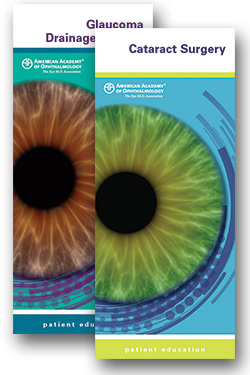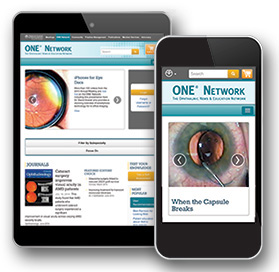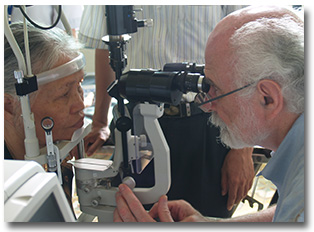What's Happening
 |
| UPDATED FOR COMPREHENSION. The Academy's patient education materials are updated to make them easier for the average person to understand. |
New Materials for Patients Tackle a Troubling Problem
Almost half of U.S. adults struggle with comprehending medical information that is written above the 8th-grade level. Although many of them speak very articulately, these adults may find texts such as patient education brochures difficult to grasp. These patients are more likely than others to take their medications incorrectly, experience more severe medical outcomes, and suffer other health-related problems. These repercussions have been estimated to cost from $106 billion to $238 billion per year, so the Centers for Disease Control, Centers for Medicare & Medicaid Services, and National Institutes of Health have made their patient education information easier to understand using recognized health literacy guidelines. The Academy meets those new standards with its patient education materials, which make their debut at AAO 2014.
What changed? The brochures, booklets, and downloadable handouts have been updated with plainer, more concise language written at an 8th-grade reading level or lower. They are printed in a font called APHont, which was developed specifically for readers with low vision. The Academy also used cleaner design elements and a specific page layout known to increase comprehension.
Spanish versions available. Seven of the printed brochures and all 87 titles in the downloadable handout subscription are available in Spanish.
Check them out in person. Improve outcomes, save time, and strengthen your informed consent process by providing your patients with these revamped resources. At AAO 2014, enjoy a 10 percent discount on these and all other Academy products. On Monday, Oct. 20, from 2:00 to 3:30 p.m., attend the launch party at the Academy Resource Center (Booth 508) to celebrate this new line. You can sip sparkling wine and talk to OMIC and Academy Patient Education Committee experts about avoiding malpractice risk with patient education and informed consent.
At AAO 2014 in Chicago, learn more about these upgrades in the Friday/ Saturday edition of Academy News, the meeting tabloid that is distributed onsite at the convention center.
Take Notice
Seeking Outstanding Ophthalmologists
Would you like to nominate a colleague for next year’s Outstanding Humanitarian Service Award? The Academy must receive your nomination by March 13. The award recognizes Academy fellows and members for outstanding contributions to humanitarian efforts, such as participation in charitable activities, care of the indigent, and community service. It acknowledges those who have performed above and beyond the normal duties of an ophthalmologist.
To obtain a nomination form and for details, e-mail member_services@aao.org, or visit the Award Programs website.
Visit Member Services at AAO 2014
Learn about your member benefits by visiting the Member Services desk at the Academy Resource Center, and enter a drawing to win an iPad loaded with digital Academy products.
Ask the Ethicist: When to Refer Complications
Q: I am a general ophthalmologist and completed my residency two years ago. After a 70-year-old patient presented to me a few months ago with bilateral visually significant cataracts, I performed cataract surgery and noticed a break in the posterior capsule. Since I did not feel that the posterior capsular break resulted in any complications, I did not mention this to the patient. On postoperative day one, the patient’s vision was 20/20 with an intraocular pressure (IOP) of 15 mmHg in the operative eye. A week later, the vision had decreased to 20/200 with an IOP of 35 mmHg and microcystic corneal edema. Although the view to the posterior chamber was hazy secondary to the corneal edema, I dilated the patient and did not observe any retained lens material in the anterior segment or vitreous cavity. The patient was started on IOP-lowering drops and asked to return in two days.
On follow-up exam, the IOP was still elevated at 40 mmHg, and the corneal edema was worse. Although I had discussed potential postoperative complications during the informed consent, the patient was still very unhappy. She wanted a second opinion, but I felt that a second opinion was not warranted at that time and started the patient on oral acetazolamide. The patient returned several days later without improvement. At that time, I referred the patient to my senior associate, who then consulted the local vitreoretinal surgeon, Dr. X. Examination by Dr. X identified retained lens material, and pars plana vitrectomy was performed to remove the retained lens nucleus fragments. What could I have done differently, and was there anything unethical about how I managed this situation?
A: Depending on the circumstances, disrespecting the patient’s wishes to see another physician for a second opinion may be unethical. Also, you should have informed the patient of the break in the posterior capsule during the surgery. Being transparent with the patient about any intraoperative or postoperative adverse events and having open communication is critical for the overall care of the patient. It can be difficult for young ophthalmologists to feel comfortable referring complicated patients to more senior associates; however, it is important to always act in the best interest of the patient.
The situation you encountered is common and can be handled in two ways. The patient may seek a second opinion independently, or the physician may recommend other physicians that the patient can see. If a patient requests a second opinion, it is in the physician’s and the patient’s best interest for the patient to see a skilled and qualified ophthalmologist who can manage the patient appropriately. It is also critical that there is communication between the physicians and that accurate information is shared regarding the patient’s condition.
For further guidance on this topic, view the Code of Ethics Principles 3, 4, and 7 and Rules 4, 7, and 14.
To submit a question, contact the Ethics Committee staff at ethics@aao.org.
 ONE SPOTLIGHT: Access popular features optimized for your mobile device. Whether you need an answer at point of care or simply want to learn something new in your spare time, the following features of the ONE Network are readily accessible on your smartphone or tablet. The content loads quickly and resizes automatically to fit your screen. ONE SPOTLIGHT: Access popular features optimized for your mobile device. Whether you need an answer at point of care or simply want to learn something new in your spare time, the following features of the ONE Network are readily accessible on your smartphone or tablet. The content loads quickly and resizes automatically to fit your screen.
- Wills Eye Institute 5-Minute Ophthalmology Consult. Get quick, reliable advice on more than 375 ophthalmic disorders with numerous photos and algorithms for reference.
- 1,200+ videos. Watch demonstrations of surgical techniques, meeting presentations, and interviews with experts.
- 1,100+ self-assessment questions. Take self-assessment exams by subspecialty, track your results, and compare your answers to those of your peers.
- Academy-developed practice guidelines. Evaluate which tools, procedures, and drugs are a good fit for your patients and practice.
To view these and other features, visit the ONE Network. |
Academy Store
Preorder ICD-10 Coding Books for 2015
Avoid coding errors and reduce audit triggers with the AAOE’s new and revised coding products available for preorder starting this month. These books contain the new codes to help with your ICD-10 transition and training. Brand-new and set to ship in January 2015, the Complete Guide to Retina Coding is an important addition to the Academy’s suite of coding products. Updated books include the best-selling Ophthalmic Coding Coach, CPT Pocket Guide, and Ophthalmic Coding Series: Essential Topics as well as the AMA’s CPT and HCPCS books. Save 10 percent when you buy four or more coding products.
The AAOE also offers several resources that are entirely focused on ICD-10: ICD-10 for Ophthalmology (either buy the 2014 edition now or preorder the 2015 edition), Conquering ICD-10-CM: Your “How To” Guide for Ophthalmology, and 90 Minutes to Conquering ICD-10-CM for Ophthalmology.
To purchase, visit the Academy Store.
Now Available: MOC Review Course on Demand
Take the Academy’s MOC Exam Review Course at home, and study at your own pace. This convenient way to prep for MOC exams includes access to audio recordings and slides from the July 2014 live course. Choose from 11 full-day sessions covering core ophthalmic knowledge, nine practice emphasis areas, and comprehensive ophthalmology. Watch and listen online from nearly any type of computer or mobile device.
For pricing and more information, visit the Academy Store.
Members at Large
People
 |
| SPECIAL RECOGNITION AWARD. Dr. May examines a patient in Dong Ha, Vietnam. |
The Global Community Service Foundation awarded Ronald C. May, MD, the Special Recognition Award for his service as a board member and Project Vietnam Medical Director for the Illinois Society of Eye Physicians and Surgeons.
Years after completing his military service, Dr. May returned to Vietnam, noted the need for new surgical equipment, and arranged to have equipment shipped to several clinics. His goodwill mission expanded to vision screenings, cataract surgeries, training (including coursework for Vietnamese ophthalmologists), construction of a training center for the Vinh Linh Blind Association, and funding for various other projects affecting thousands of lives.
The Academy’s International Envoy, Michael W. Brennan, MD, said, “My hearty congratulations to Ron. Like Ron, I was in Vietnam many years ago and have returned trying to promote organizational inclusiveness. Ron’s alliance with his colleagues and the Illinois Society of Eye Physicians and is never a one-person show but a last-Surgeons exemplifies the idea that this ing professional outreach.
D.C. Report
Governmental Affairs at AAO 2014
In Chicago, several sessions will showcase the Academy’s relationship with federal agencies and lawmakers. Academy members are encouraged to take advantage of these timely sessions, which are free of charge.
2015 Medicare Update (Spe11). The CMS will release the final rule in the 2015 Medicare Physician Fee Schedule shortly after AAO 2014, and it will have an extensive impact on ophthalmology. At this session, Academy leaders preview and discuss likely changes, such as those anticipated to the Physician Quality Reporting System. When: Sunday, Oct. 19, 12:15-1:45 p.m. Where: Grand Ballroom S100c. Access: Free.
Q&A With the FDA (Spe13). This Q&A with ophthalmic drug and device experts from the FDA will cover the drug and device approval process, new FDA initiatives, and other news affecting ophthalmic products. Participants will have an opportunity to submit questions to Academy and FDA experts. When: Sunday, Oct. 19, 12:45-1:45 p.m. Where: Room N427d. Access: Free.
The Affordable Care Act: Present and Future Prospects for Ophthalmology (Sym22). The Affordable Care Act will continue to impact ophthalmology practices in many ways and at different levels, such as more patients being covered by insurance, the expansion of Medicaid, and more. The speakers, to include Congressional candidate Mariannette J. Miller-Meeks, MD, an ophthalmologist and former director of the Iowa Department of Public Health, will provide insight on how ophthalmologists should respond to these changes. When: Monday, Oct. 20, 8:30-10:00 a.m. Where: Room S406a. Access: Free.
Visual Impact of Traumatic Brain Injury: Lessons Learned (Spe18). Traumatic brain injuries have become a significant area of emphasis in the Department of Veterans Affairs, the Department of Defense, and the private sector. This session features ABC News journalist Bob Woodruff, who in 2006 while reporting from Iraq was critically injured by a roadside bomb that struck his vehicle. After the injury, he cofounded the Bob Woodruff Foundation to help ensure that injured service members, veterans, and their families have access to the highest level of support and resources. When: Monday, Oct. 20, 12:45-1:45 p.m. Where: Room S102abc. Access: Free.